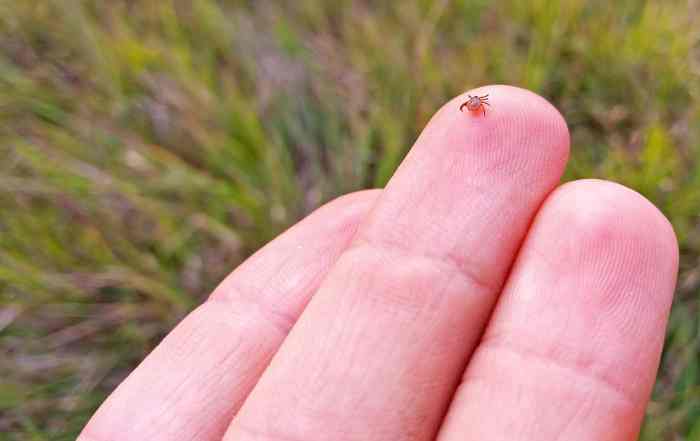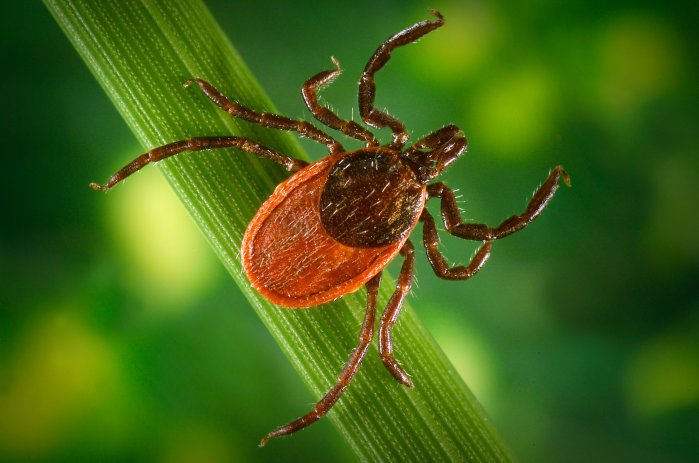In warmer months – April to October – ticks become more active, and cases of Lyme disease spike throughout the region. But while Lyme disease is by far the most common tick-borne illness, it’s not the only one in town.
The incidence of babesiosis, a rare parasitic disease transmitted through the bite of an infected tick, has grown significantly in the Northeast, including New York State, according to a report released by the Centers for Disease Control in March. From 2011 to 2019, cases in New York increased by 58.3%, from 418 to 663 total cases, or from 2.1 to 3.4 cases per 100,000 people. Within New York State, babesiosis has been particularly prevalent in Suffolk County, says Dr. Andrew Handel, an expert in pediatric infectious diseases at Stony Brook Children’s Hospital.
Babesiosis, which can also be transmitted from mother to fetus, affects the red blood cells, causing anemia, Dr. Handel says. Many infected people, particularly children, will be asymptomatic or have mild symptoms, which can include fever, muscle and joint pain, and fatigue. But in some cases, babesiosis can be severe or even fatal, particularly for the elderly or those with an impaired immune system.
The good news is that, as with other tick-borne diseases, antibiotics are highly effective at treating babesiosis, particularly in its early stages, and there are several things you can do to avoid getting tick bites and tick-borne illnesses in the first place.

Expert Weighs in On Preventing Lyme, Babesiosis, and Other Tick-borne Diseases
Lyme disease
Lyme disease has been occurring regularly on Long Island for years, and most people know that it’s often associated with a so-called “bull’s-eye” rash where the tick bite occurred. The rash usually shows up a week to three weeks after a bite from a Lyme-infected tick, Dr. Handel says.
“While most people will have the rash, bear in mind that not everyone will,” says Dr. Adrian Popp, chief of infectious disease at Northwell Health’s Huntington Hospital. “And some people who have the rash might not notice it, either because it’s quite faint or because it’s in a spot that’s not readily visible, such as on their back or the back of their head.”
Along with the tell-tale rash, people infected with Lyme may experience flu-like symptoms such as fever, muscle aches, headaches, and fatigue. If the disease goes untreated, patients may develop rashes all over their body as well as more severe symptoms such as Lyme arthritis, Lyme meningitis, which may present with severe headaches, or Lyme carditis, which involves irregular heart rhythms.
According to Dr. Handel, other relatively common tick-borne diseases in this region include anaplasmosis and ehrlichiosis, two closely related diseases with symptoms that may include fever, muscle aches, fatigue, weakness, and headaches. Like Lyme and babesiosis, they can also be effectively treated with antibiotics.
When people develop persistent, nonspecific symptoms during tick season, “we can do blood tests to check for all of these possibilities,” Dr. Popp says.
Prevention
There are several things you can do to prevent tick bites and tick-borne illnesses.
When walking or hiking, stay in the middle of the path or trail and try to avoid coming into contact with any brush.
“Ticks tend to hang onto tall grasses and can grasp onto your skin if you brush up again them,” Dr. Handel says, noting that ticks can’t fly or jump, and they don’t typically fall from trees.
Wearing lightweight tops with long sleeves and pants can be protective, and since ticks look like small black dots, they will show up better on light-colored clothing, says Dr. Handel. “Insect repellent containing 20% or 30% DEET will help prevent ticks from attaching to your clothing and skin,” he adds.
When you get home, putting clothes in a dryer on high heat for at least 10 minutes will kill any ticks that may be on your clothes. And at the end of every day spent outdoors, do a thorough body check for ticks, says Dr. Popp.
“Have a significant other check the areas that you can’t see, including the scalp,” he says. “Ticks can be as small as a pencil tip and are easy to miss.”
If you discover a tick on your skin, “use tweezers to try to remove it in its entirety, including the mouth,” says Dr. Popp. “If you use your fingers, the tick is more likely to break apart; you may get the body off, but the mouth will still be attached. Put the tick in a clean jar and take it to your doctor or an urgent care center. If there is potential exposure to Lyme, we can treat prophylactically with doxycycline, an antibiotic, within the first 72 hours following the tick bite.”
Ticks are no reason to stop enjoying summer outdoors on Long Island, Dr. Popp says. But taking a few precautions can help ensure that you enjoy the outdoors more safely.
Related Story: What to Know About Tick, Lyme Season Following a Mild Winter































